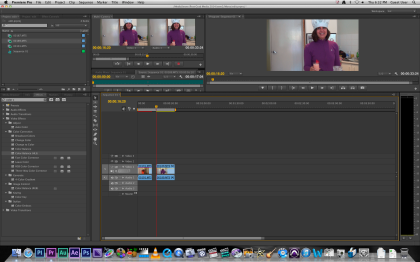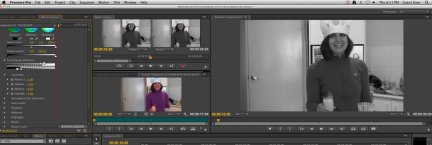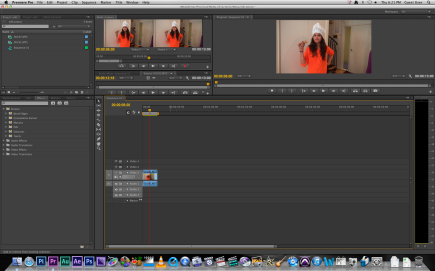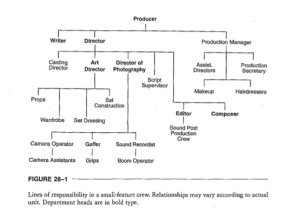Synopsis of two interesting points which I found from the Reading: Purpose of the script and standard format of a script
Let’s first understand the purpose behind writing a script
Purpose of a script: Script has two distinct purposes namely,
- To allow producers, directors, funding project officers and distributors to believe in the quality and viability of the project. Basis this they can decide if they should get involved in the project. The script gives an idea of the costs or financial risk involved for the investors. The other specific details rendered from the script are: the length of the project, how many locations, how many actors are needed across scenes and the kind of technology required to shoot the scenes at specific locations. The tentative costs of the production design of sets, wardrobe, make up, styling etc
- The script also highlights whether the writer of the script can deliver a story effectively in the chosen medium.
Hence a good script is indeed very critical!
Now let’s have a look at how to begin writing a script in the standard acceptable formats.(kindly note that the script texts may have been dispaced and not be i actual place owing to shift in formats.So consider them only as representative!)
A standard script will conform to the following format with very few variations depending on the country of origin:
- Script will be single spaced, in 12-point courier font. It will comprise of
- Scene headings, sometimes called slug lines
- Scene descriptions or Action passages
- Dialogue
Scene headings are left indented and always contain:
- Scene number (repeated at the end of the line)
- An indication of whether the scene utilises the interior or exterior setting
- An indication of the time of day
Example:
- INT. BEDROOM. DAY. 1.
In case of flashbacks or flash-forwards or any other variations, the scene heading is where it should be indicated.
Example:
- INT. BEDROOM. DAY. (FLASHBACK) 12.
A cautionary note on flashbacks: make sure these scenes are absolutely vital to the story before you indulge in them. New writers use flashbacks to inform the audience about something they would have been better off knowing at the story’s beginning or simply to vary linear structure for the sake of it.
MONTAGES & SERIES OF SHOTS
A montage is a series of very brief scenes used to convey the passage of time quickly and conveniently. You will write only one scene heading, indicating that you are using montage/series and then describe each part of the montage.
Example:
- INT/EXT. DAY. (MONTAGE) 22.
1.Louisa and Amy in the car in heavy traffic. Amy in the passenger seat looking frantically through a large tote bag. Louis driving unruffled.
2.Max pulls up outside Amy’s house, runs from his car to the front door, mobile in hand.
3.Louisa and Amy on the Westgate Bridge. Faster now, thinner traffic.
4.Max tears through Amy’s drawers and cupborads, obviously livid but meticulous.
5.Louisa and May at a halt at traffic lights. A muffled polyphonic meow sounds from inside Amy’s bag. She scrambles to reach her mobile.
6.Max sits on Amy’s bed punching numbers into his mobile.
- INT. BEDROOM. DAY 23.
Max has hit breaking point. Standing at the window, phone to his ear, he pauses as though trying to contain his anger.
AMY (O.S- phone)
Max. (beat) Max? I know, I know I screwed op.
So scream at me
Max
I’m past my screaming Honey!
Caution about use of montage: When you write a montage you are setting up a great deal of expense and work for the crew, who have to tee up every location and shoot everything that’s written. So ensure that only stuff, which is very necessary and sure, needs to go into the montage.
SCENE DESCRIPTION is everything the audience will see and hear as the scene opens.
Once you have established the basics of setting through the scene heading, you need to describe the setting:
- The physical surroundings
- Characters in the scene
- What’s actually happening as the scene opens up
Therefore the scene headings need to describe:
- The space we are going to see: e.g. what kind of kitchen/café/bedroom/garden
- Early morning sunlight falls the white clean granite slab of Mel’s kitchen with a utensil filled basin from last night’s dinner.
- The characters within the scene: give their age, style of dress. Always describe how your characters appear and what they do and not how they think or feel. Example: he stares at the floor, obviously guilty stricken. To describe a particular character as:
- 55,with a massive paunch and pathetic comb over that does nothing to hide the fact that he’s bald as a cue ball.
- All action which takes place prior to dialogue being spoken
- Music, and any other incidental sound.
Scene description is left indented and is separated from scene headings by a double space.
DIALOGUE
A Dialogue should be separated from scene descriptions by a double space, and headed by the speaker’s name (in Capitals) and follow directly beneath, it should be single spaced and indented so that it’s confined to a 7.5 cm span in the centre of the page.
Joe fumbles for a small digital clock at the bedside table. As he grabs it, his elegant, slightly older wife, THERESE appears fully dressed in the doorway, phone in hand.
THERESE
She said no.
JOE
That’s not what he promised.
Directing a dialogue: When it comes to stating the manner in which the dialogue should be delivered, you can specify the tone, volume etc.whereever necessary by using phrasing beneath the character name. This is known as parenthetical.
JOE
(yelling)
Just make the call!
Off screen/Voiceover: Occasionally you need to indicate even though the character’s voice is heard via dialogue, they are not actually visible or speaking in the scene. Then make use of
O.S. : Off-screen
V.O. : Voiceover
The above are the basics to follow to start writing a script in acceptable formats











